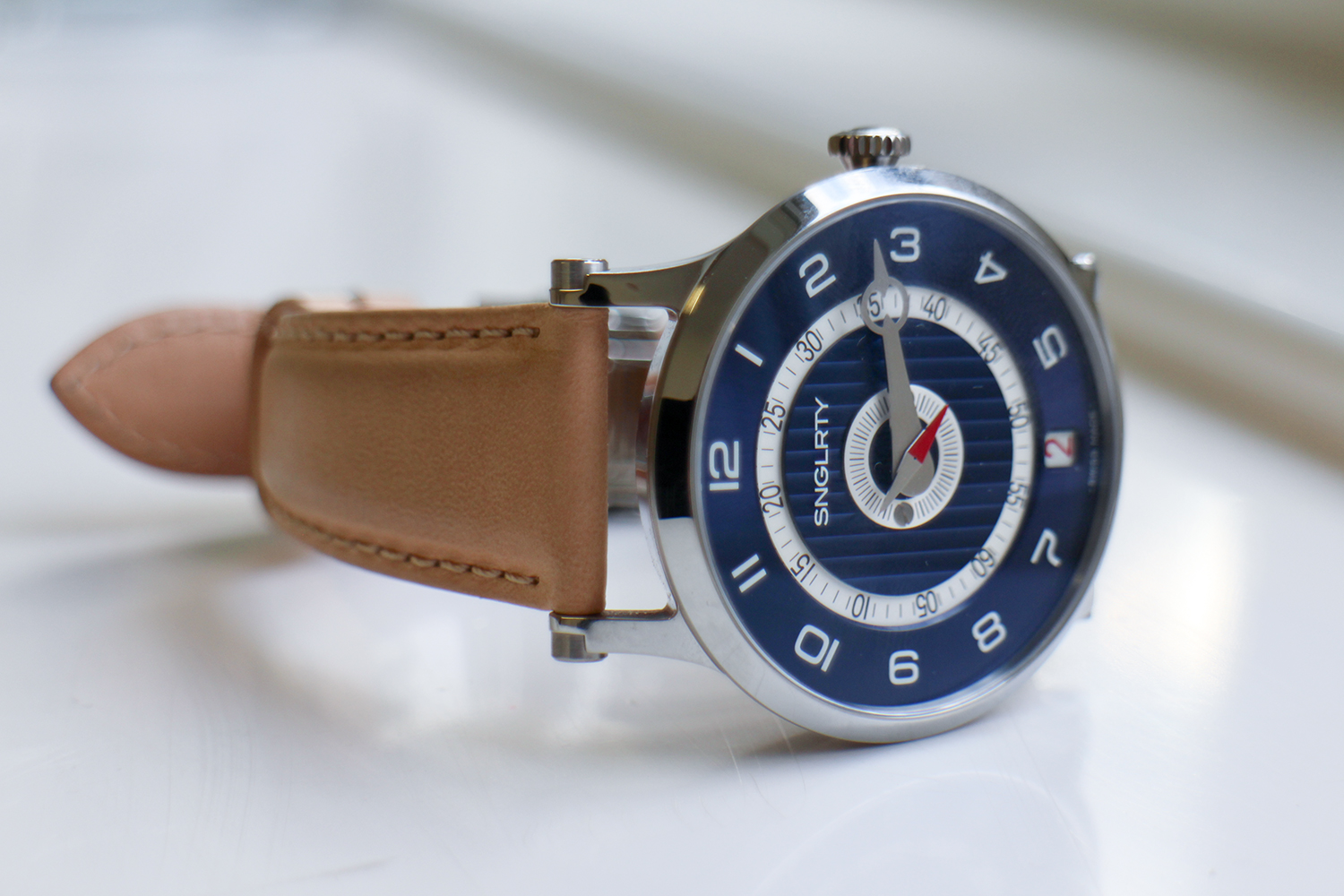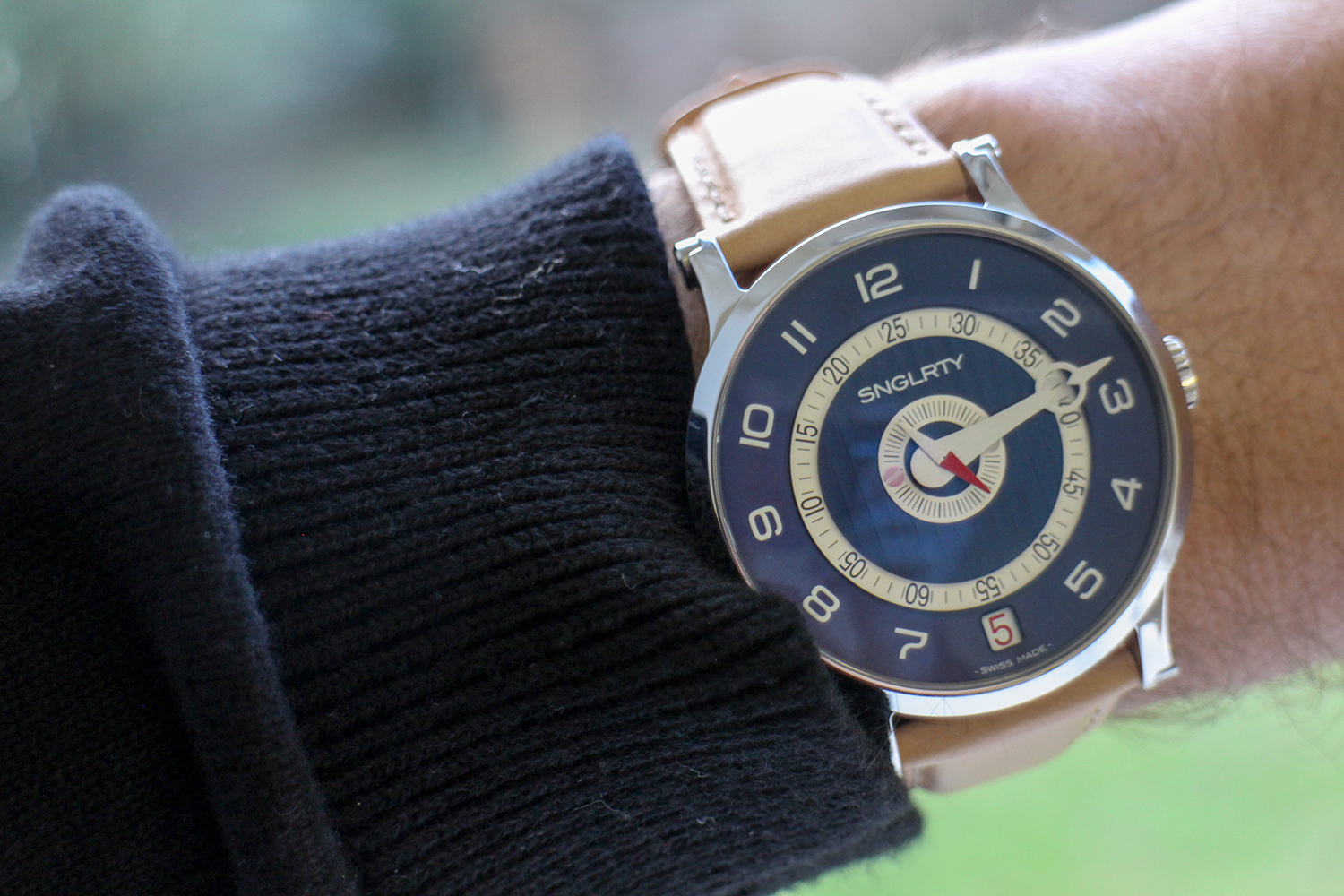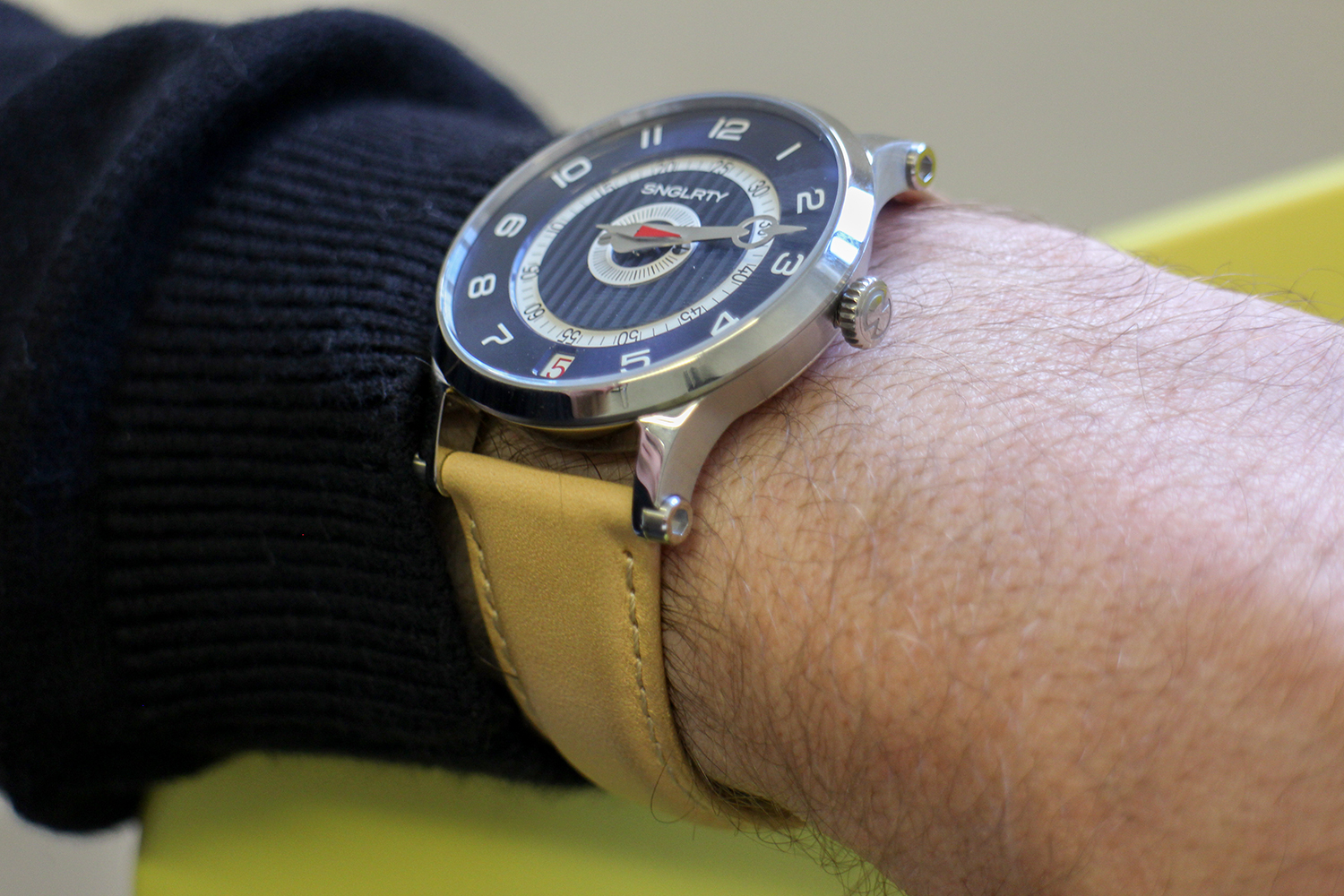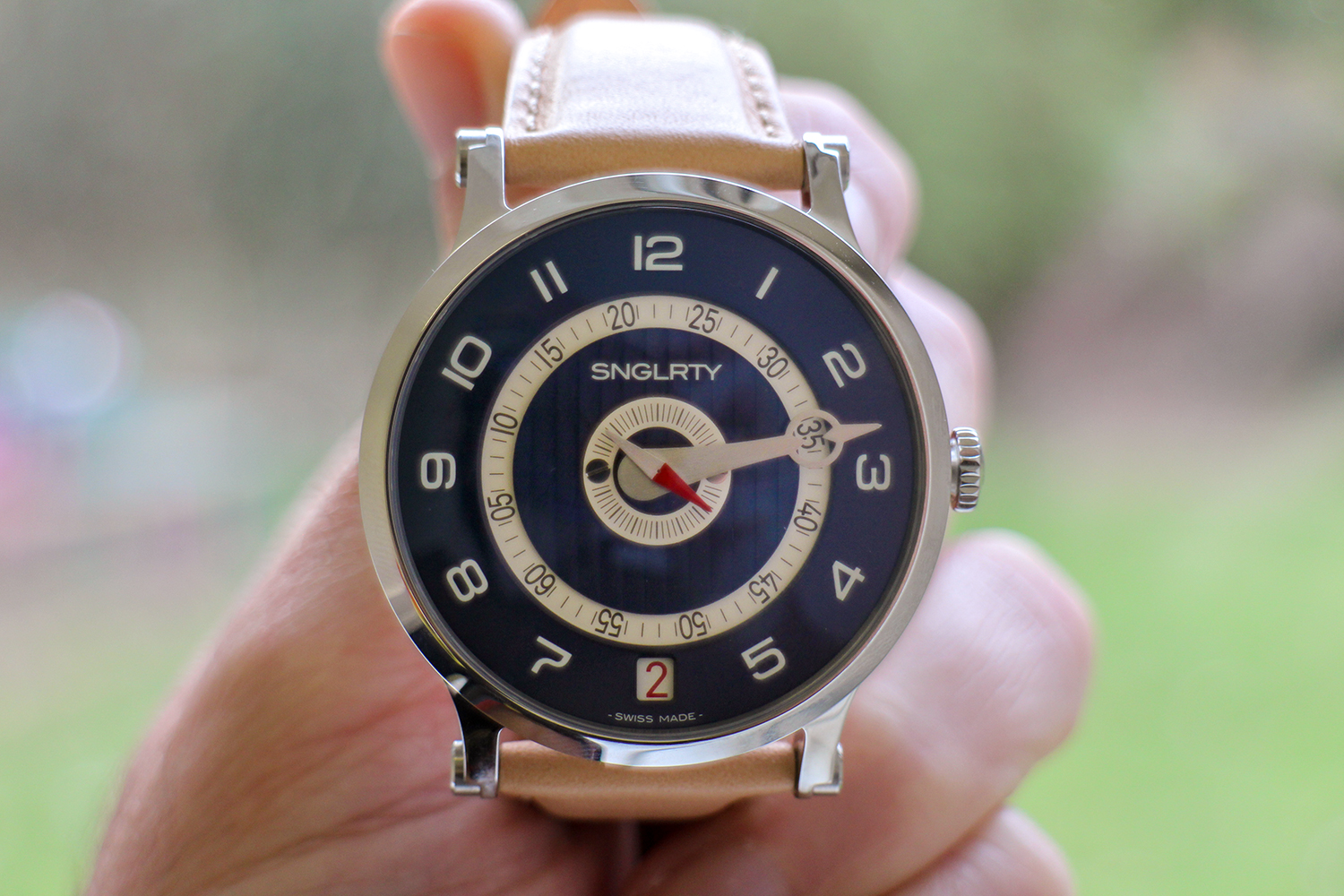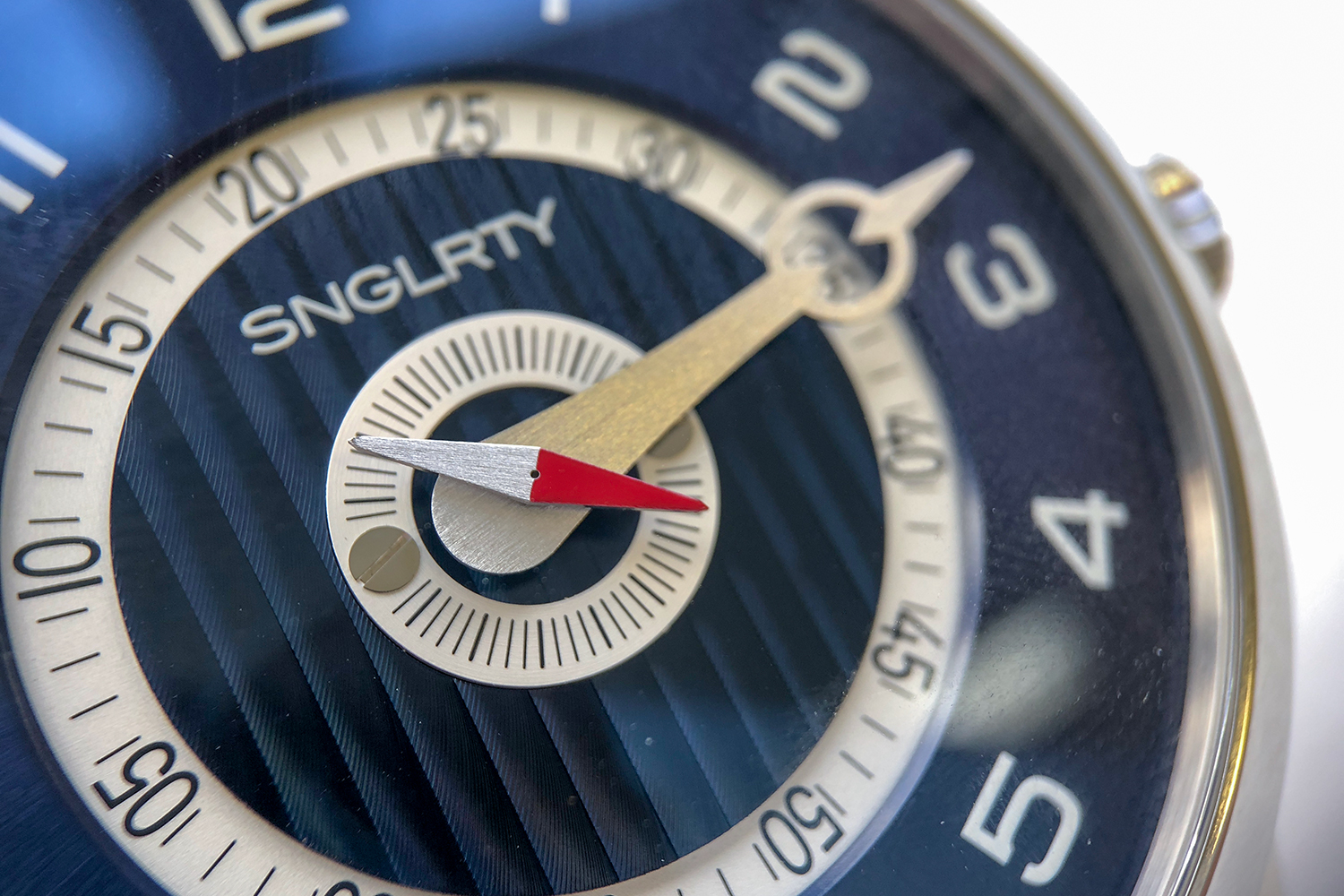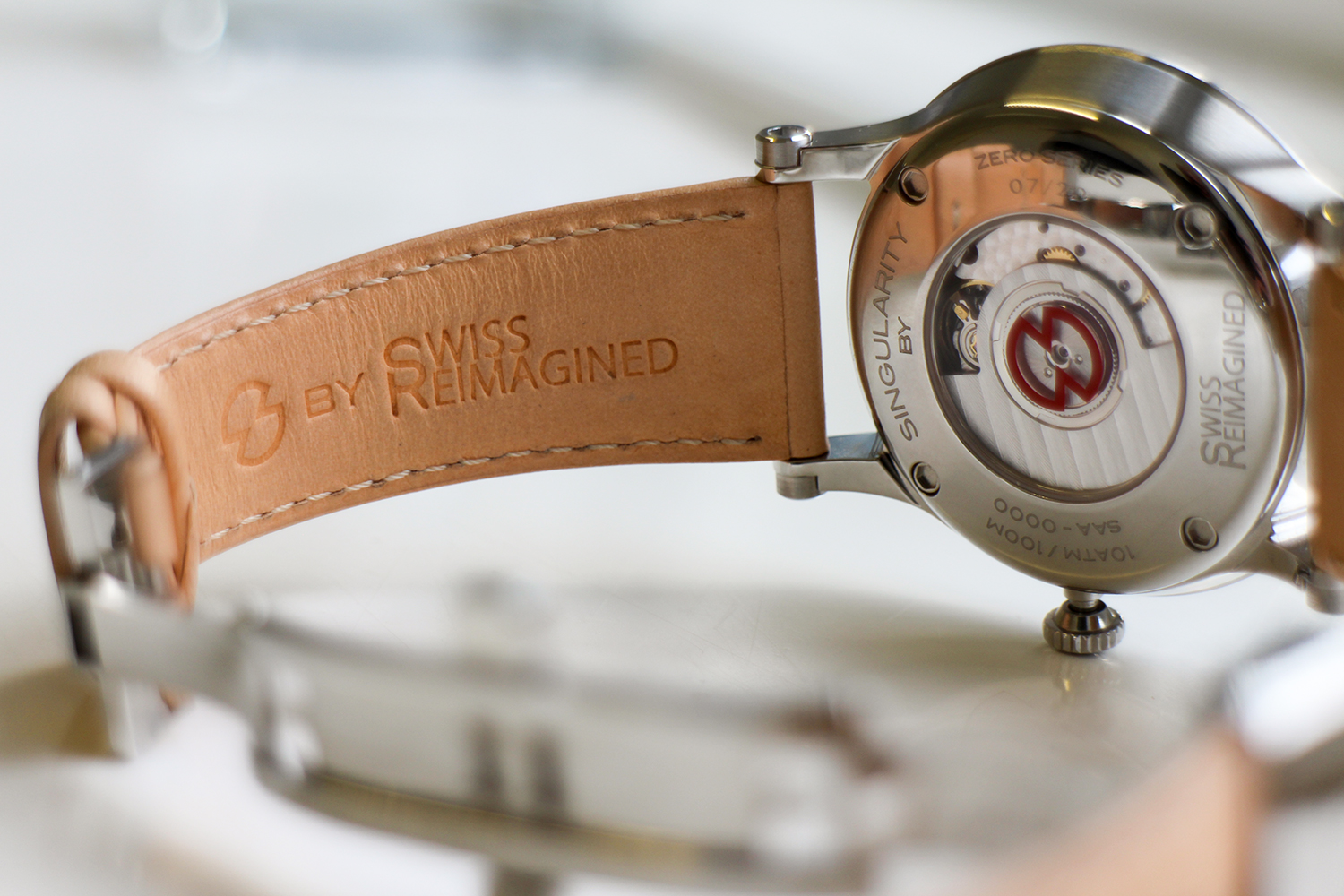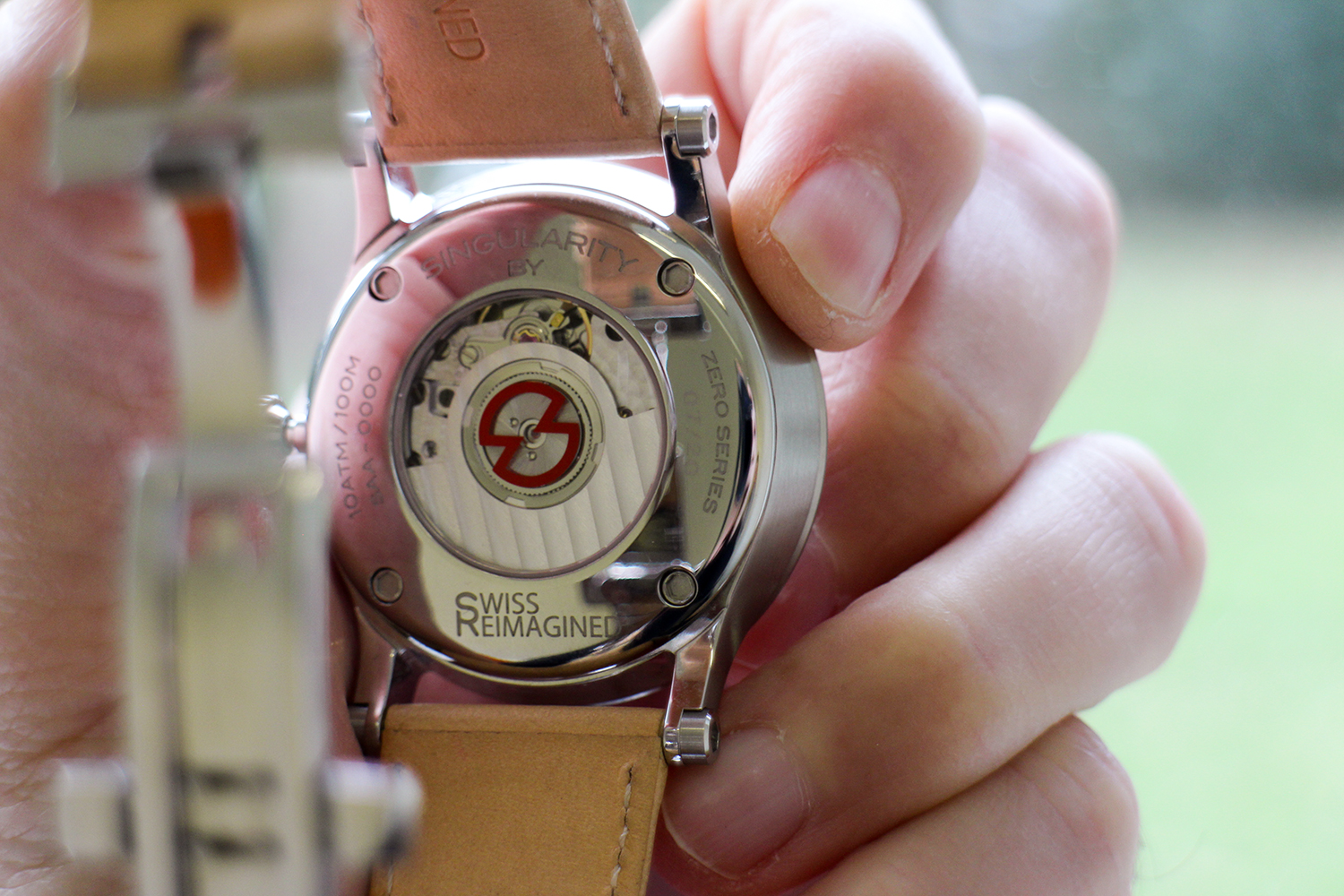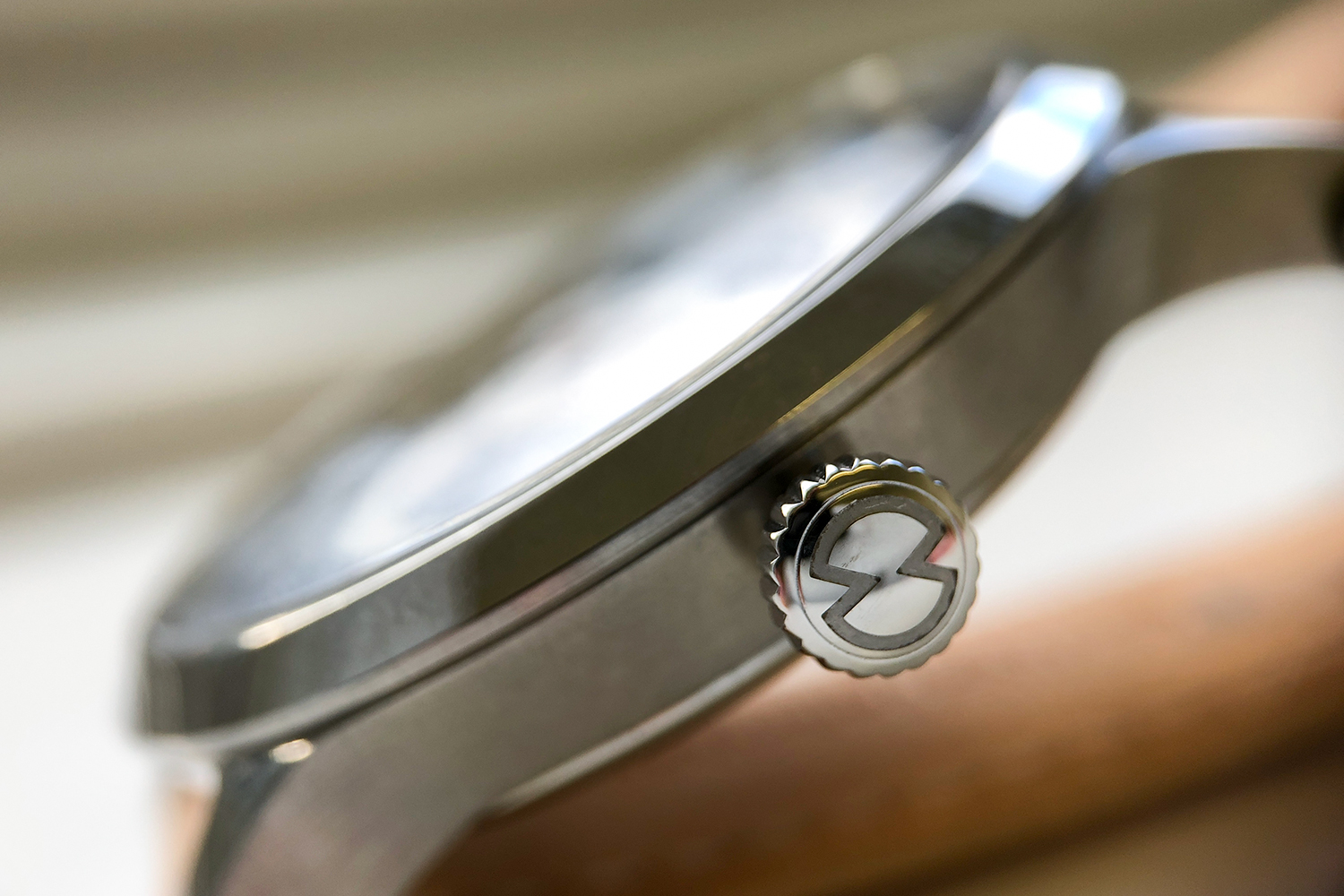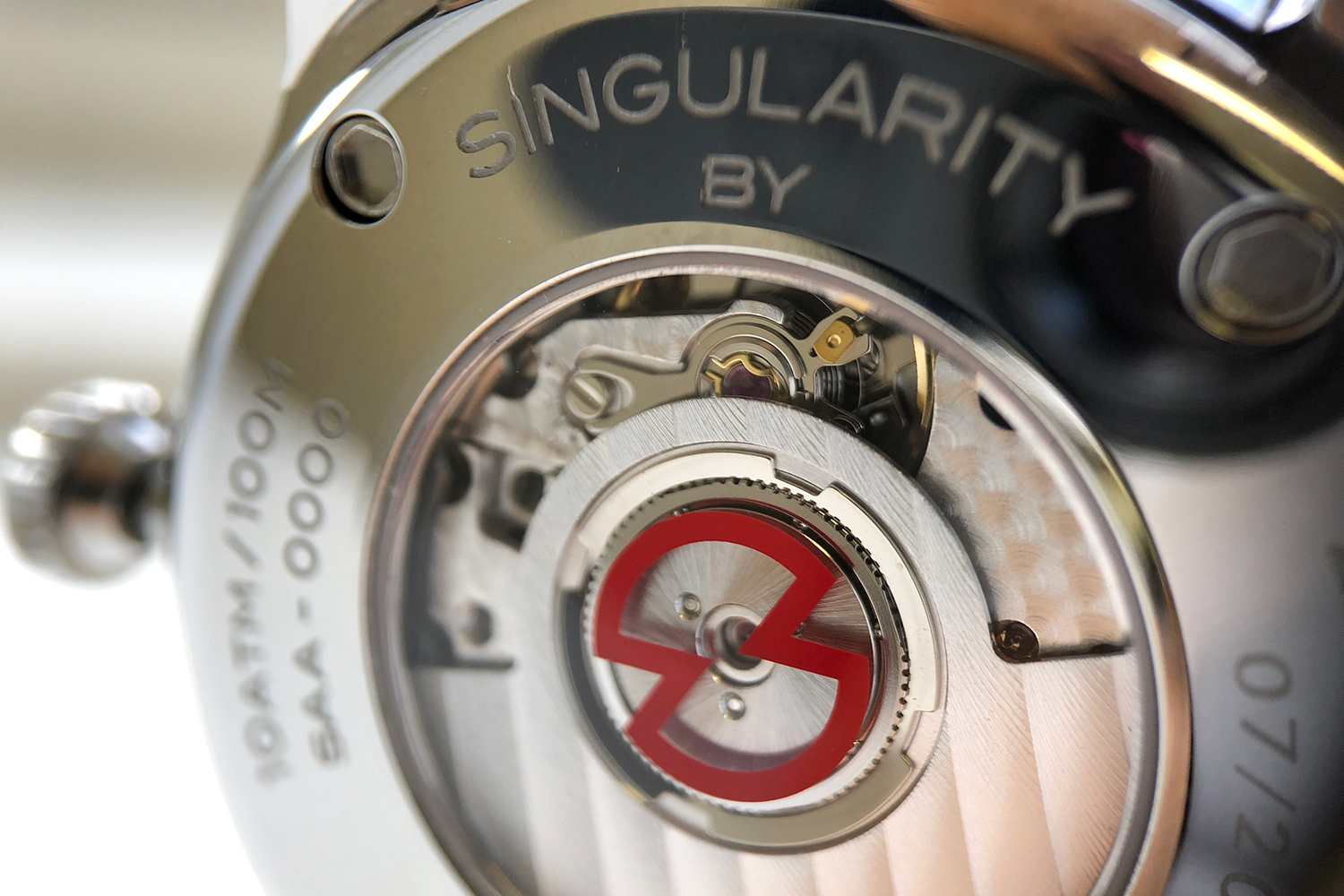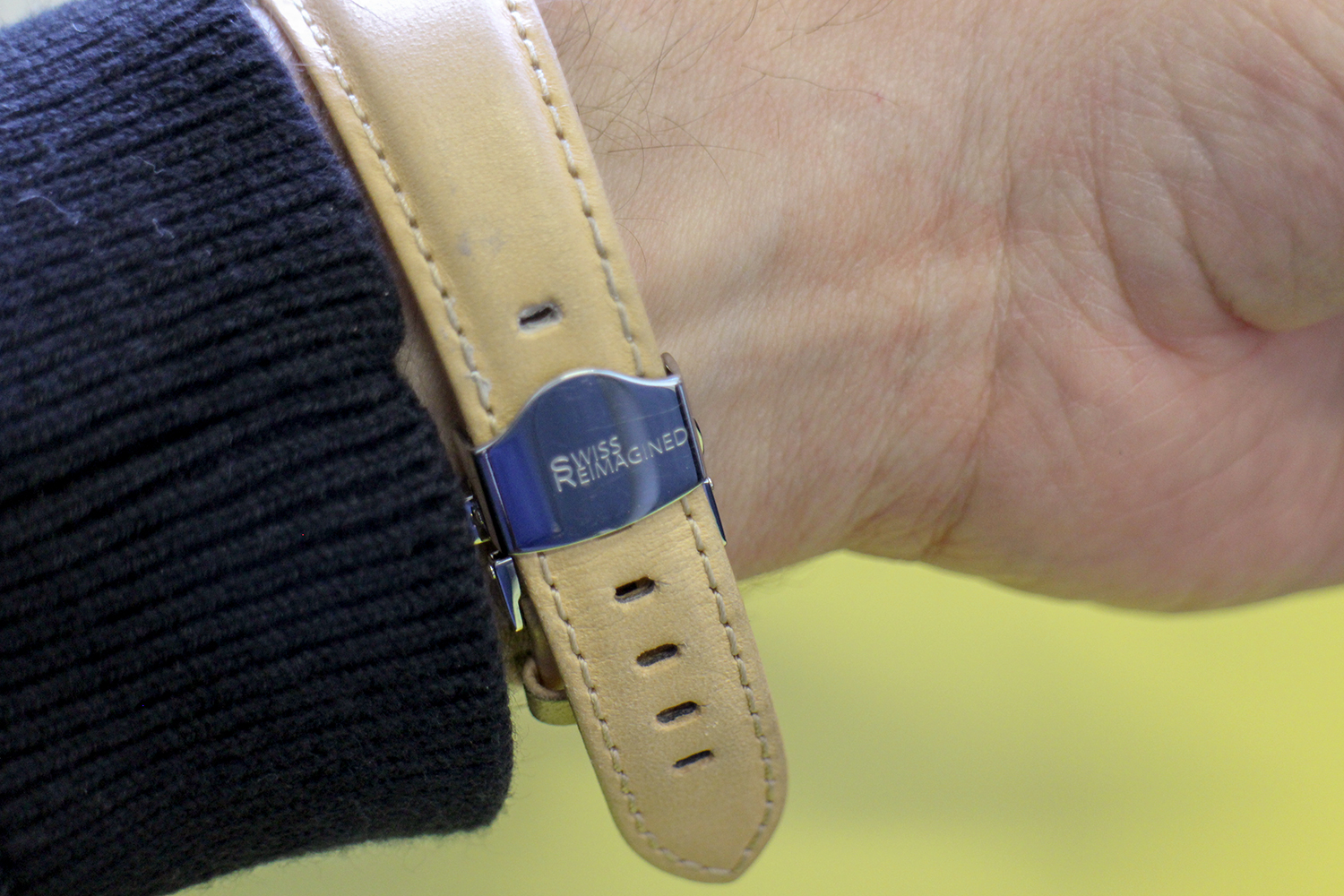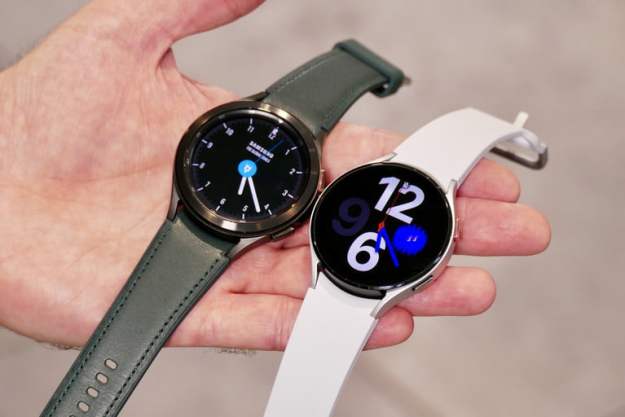Three years ago, in a conversation over drinks, Stephen Mansfield and Daniel Blunschi pondered how they could go about making a one-handed watch that accurately told the time. One drink turned into another, and the concept that would eventually become the SNGLRTY watch was scribbled down on a coaster. Really.
As smartwatches become more complicated with touchscreens, buttons, and a mass of functions to figure out, and are sometimes worse for it, many may be looking for something simpler. It doesn’t get much simpler than a one-handed watch. Except there’s a downside: One-handed watches only tell the approximate time rather than the exact time. A single hand will only ever show it’s almost 2pm, for example, simply because there’s not enough space for it to illustrate otherwise.
Not any more. This is Swiss Reimagined’s SNGLRTY (which we will be calling Singularity from here on), the world’s first mechanical one-handed Swiss chronometer to accurately tell the time. It’s simple on the outside, but filled with clever technology inside.
“How do you take a mechanical watch face, simplify it, but make sure it’s still understandable?” That was the question Mansfield asked when coming up with the idea, he told Digital Trends. The two considered the main ways we tell the time now.
“On a mechanical watch we have to decrypt two hands to tell the time, while a digital face shows you the facts with numbers,” Mansfield said.
The idea became, “How to present time on a single line, like a digital watch, but on a mechanical watch.” It was imperative to keep the intuitive at-a-glance basics of time-telling, like knowing 3 o’clock is on the right hand side of the face, and then combine it with the precise reading of a digital watch face. That became the basis of the Singularity’s concept.
Does it already exist?
Blunschi’s first reaction was that such a device already existed. Watches with a single hand are not new. As an experienced professional in the watch industry with all the right contacts in Switzerland, he traveled to the region to start researching. “Swiss watchmakers reacted the same way,” he said; but after much research and gathering, he could not find a previously existing Swiss-made chronometer watch that accurately told the time with one hand.
Present time on a single line, like a digital watch, but on a mechanical watch.
Now came the task of designing and building the Singularity watch. Already in Switzerland, Blunschi sought “watchmakers whose job it is to innovate and create” to undertake the project. But was the concept too challenging for an industry sometimes seen as staid? After all, few have embraced smartwatches, so was a radical idea welcomed? Yes.
“Traditional watchmakers love to challenge themselves,” he said. “But the presentation of time never gets simpler, the goal is more functionality — the art of watchmaking.”
Building the Singularity
This is where the technical complexity of Singularity comes to the front. An entirely new module, named One Hand Indication (OHI), had to be designed for the single hand, minute disc, and date disc. It needed to be thin to sit on top of the Swiss watch movement, and flexible enough to be reused in future watches, regardless of their size. The result is a Singularity OHI module containing the minute disc — which has to run in reverse and slower than usual, further complicating its creation — and the date disc, along with 14 other components. It measures just 1.2mm in height, where most other modules are usually 2mm.
The date disc was the biggest technical challenge faced by the team. It’s placed at the top of the module, rather than at the bottom of the stack in most other watches, which is why many have a magnified section on the face to help you read the small figures better. Bringing it closer to the surface on the Singularity made it more readable without a magnifier on the crystal, and also gave the opportunity to have some fun with the design.
Present time on a single line, like a digital watch, but on a mechanical watch.
“Some two-digit numbers don’t quite fit inside the window,” Brunschi pointed out. “They’re a little too big.” Rather than making them difficult to read, he continued, “The legibility is actually increased.”
Then there is the other hand in the center of the Singularity watch face, which looks a lot like a compass pointer. “It’s the second hand. We wanted to add a twist. We don’t need to read it, of course, but like on other watches it does tell you the watch is working.”
Trying the prototype
We tried on one of the first prototype watches. While the design is final, some aspects are still in progress, such as the buckle. The Singularity looks superb. Just like you have to concentrate to see two watch hands moving around the face, you have to look hard to see the one hand and disc moving here. They do, of course. That’s Singularity’s appeal, it’s time: Reinvented. There are thousands of unusual watches out there; but this is truly unique.
There is a period of adjustment though. Reading the time accurately at a glance takes practice. Mansfield admitted that it took him nearly two days to get comfortable with it, leading him to wonder if the concept was going to work at all. Then, it just clicked, and he knew what the team had made was special. The crystal is made from sapphire, which is repeated underneath to see the mechanism in action, and both have anti-reflection coatings. The body is made from 316L stainless steel.
Tempted by Singularity? You have the chance to get one through the company’s Kickstarter and Indiegogo crowdfunding campaigns now, with prices starting at $980. It’ll be a limited edition for this price — a simplified version without the date — which will never again be sold, and only at the launch. From there, depending on the movement chosen — there are three, all made by Sellita — and your choice of custom designed faces from the total of 350 combinations available, the price will go from $1500 to about $3500. Additionally, 10 special editions will be sold where the case, colors, materials, size, and shape can be fully designed around the Singularity movement, each costing $50,000.
The concept of telling time on the Singularity is simple, but the technology underneath is not, and has taken three years to come to fruition. We’re surrounded by complex technology — and on most days we love it — but sometimes simplicity, style, and individuality appeals. That’s the time when you’ll be pleased to put the Singularity watch on.
Editors' Recommendations
- OnePlus just fixed a big issue with the OnePlus Watch 2
- This is the OnePlus Watch 2, and it looks incredible
- My life with the Apple Watch Ultra transformed after changing this one thing
- Nomad Base One MagSafe charger hands-on: Beautiful, pricey
- The OnePlus Watch Harry Potter Edition is here but you can’t get it in the U.S.

